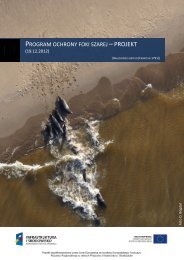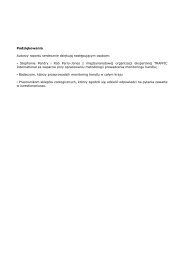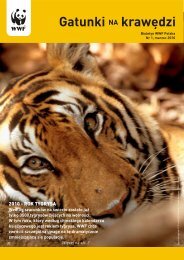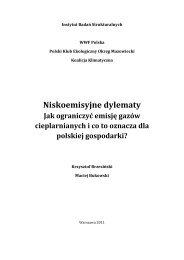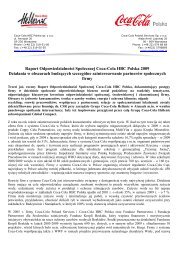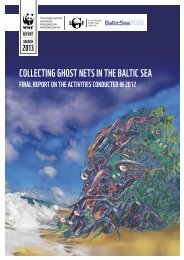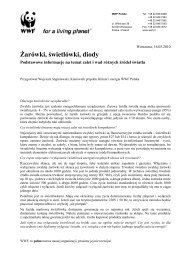Biodiversity, biocapacity and better choices
Biodiversity, biocapacity and better choices
Biodiversity, biocapacity and better choices
Create successful ePaper yourself
Turn your PDF publications into a flip-book with our unique Google optimized e-Paper software.
Biogeographic realms<strong>Biodiversity</strong> trends at a regional level can give insightsinto how animal populations are faring in different partsof the world.Terrestrial <strong>and</strong> freshwater populations are assigned to fivebiogeographic realms (Figure 15), three of which are largelytropical (Indo-Pacific, Afrotropical <strong>and</strong> Neotropical) <strong>and</strong> two largelytemperate (Palearctic <strong>and</strong> Nearctic). The Living Planet Indexincludes species’ populations in the Antarctic, however due to a lackof data from this region, it is not yet possible to construct an indexfor that region alone.Temperate realms show stable trends, while tropical realmsexhibit rapid decline. The Palearctic <strong>and</strong> Nearctic indices showlittle change between 1970 <strong>and</strong> 2008 (Figures 16 <strong>and</strong> 17). Thelatter is likely due in part to effective environmental protection<strong>and</strong> conservation efforts since 1970. Individual populations inthe Palearctic realm fared differently: Some, such as seabirds <strong>and</strong>wintering water birds, increased (for example, some UK wild birdpopulations: Defra, 2010), while others, such as saiga antelope(Saiga tatarica) (Milner-Gull<strong>and</strong> et al., 2001) <strong>and</strong> amphibians incentral Spain (Bosch <strong>and</strong> Martinez-Solano, 2006), underwent largescaledecline. The water bird trend may be due in part to <strong>better</strong>environmental protection since 1970. However, as most data comefrom Europe, with comparatively little data from northern Asia,trends from individual countries could provide a different picture.In contrast, the Afrotropical index declined by 38 per cent;the Neotropical index by 50 per cent; <strong>and</strong> the Indo-Pacific index by64 per cent (Figures 18, 19 <strong>and</strong> 20). These declines reflect largescaleforest <strong>and</strong> other habitat loss across these realms, driven bylogging, growing human populations, <strong>and</strong> agricultural, industrial<strong>and</strong> urban developments (Craigie et al., 2010; Norris et al., 2010;MEA, 2005; FAO, 2005; Hansen et al., 2008). Tropical forestcover declined most rapidly in Southeast Asia between 1990 <strong>and</strong>2005, with an estimated 0.6-0.8 per cent loss per year (FAO, 2005;Hansen et al., 2008). The decline in the Neotropical index alsoreflects catastrophic declines in amphibian numbers, caused inmany cases by the spread of fungal disease.© Michel Roggo / WWF-CanonRio Negro Forest Reserve, Amazonas, Brazil. Flooded forest during rainy season. Aerial view offloating vegetation.WWF Living Planet Report 2012 page 32



